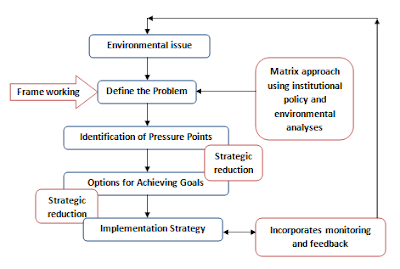Welcome to my very first blog! I’m Liza, a postgraduate Environment student from Lincoln University, Christchurch, New Zealand. Over the next few months I am going to be providing regular blog entries on the topic of Integrated Environmental Management (IEM) as part of my environmental policy studies at Lincoln University.
It’s week 1 of course, and I am going to attempt to define IEM for the first time. Some of the different definitions used to describe IEM are seen below;
• “... an approach to the management of the environment that takes into account its complex, multi- facetted, & interconnected nature.” (Bührs 1995)
• “Coordinated control, direction or influence of all human activities in a defined environmental system to achieve & balance the broadest possible range of short- & long-term objectives.” (Cairns & Crawford 1991)
• “A process of formulating & implementing a course of action involving natural & human resources in an ecosystem, taking into account the social, political, economic, & institutional factors operating within the ecosystems in order to achieve specific societal objectives.” (modified after Dixon & Easter 1986; cited in Margerum & Born 1995)
Is this enough?
While all three definitions are a broad attempt at defining IEM they all tend to look at the environment from a human focused perspective, on what the environment can do for us.
Bührs (1991) suggests that we should take into account all of the complex connections in nature - A "Look at the Bigger Picture" approach, to ensure all aspects of the problem are taken into account. Cairns & Crawford (1991) highlight the importance of short & long term objectives in achieving balance, while Dixon & Easter (1986) mention the need for considering institutional factors as well as social, political and economic in achieving societies objectives. All of these points are crucial to the success of IEM but are these definitions enough?
Cairns & Crawford (1991) tell us that IEM is NOT fragemented decision making so that only one use is considered at a time, nor is it short-range goals that benefit a single group.
Bührs (1991) suggests that we should take into account all of the complex connections in nature - A "Look at the Bigger Picture" approach, to ensure all aspects of the problem are taken into account. Cairns & Crawford (1991) highlight the importance of short & long term objectives in achieving balance, while Dixon & Easter (1986) mention the need for considering institutional factors as well as social, political and economic in achieving societies objectives. All of these points are crucial to the success of IEM but are these definitions enough?
Cairns & Crawford (1991) tell us that IEM is NOT fragemented decision making so that only one use is considered at a time, nor is it short-range goals that benefit a single group.
Further studies published by Bührs (2009) highlight IEM as a challenge to humans on two levels:
- To make a cognitive readjustment as an individual in our thinking as well as our decision making behaviour.
- To integrate these action and ideas through all areas of life in a coherent and consistent manner especially through our policies and institutions.
IEM requires a FRAMEWORK to progress!
 Frameworks are good! They are essential supporting systems that help the policy process. This flow chart describes a process or framework for progressing with IEM. It is an iterative process, that can be continually improved over time through monitoring and feedback. It is important for users to focus on the "Bigger Picture" as it helps to improve agreement between stakeholders and it is a good place to start when using the framework. Defining the problem in the broadest sense ensures that all factors are taken into account at the start of the process and can improve the success of IEM.
Frameworks are good! They are essential supporting systems that help the policy process. This flow chart describes a process or framework for progressing with IEM. It is an iterative process, that can be continually improved over time through monitoring and feedback. It is important for users to focus on the "Bigger Picture" as it helps to improve agreement between stakeholders and it is a good place to start when using the framework. Defining the problem in the broadest sense ensures that all factors are taken into account at the start of the process and can improve the success of IEM.
Thanks for reading my first blog, this was an introduction to IEM providing some of the common definitions and outlining the importance of using a framework to progress IEM. Keep following my blog to learn more about the wonderful world of IEM in environmental policy. Next week i will investigate step 2 of IEM framework- defining the problem...
References
Bührs, T (1995). Integrated Environmental Management: towards a framework for application. Unpublished paper, Environmental Management and Design Division, Lincoln University.
Bührs, T. (2009). Environmental Integration: our common challenge. SUNY Press, Albany. Chapter 1:7-39.
Cairns, J. Jr. & Crawford, T.V. (1991). Integrated Environmental Management. Chelsea, Michigan: Lewis Publishers.

No comments:
Post a Comment